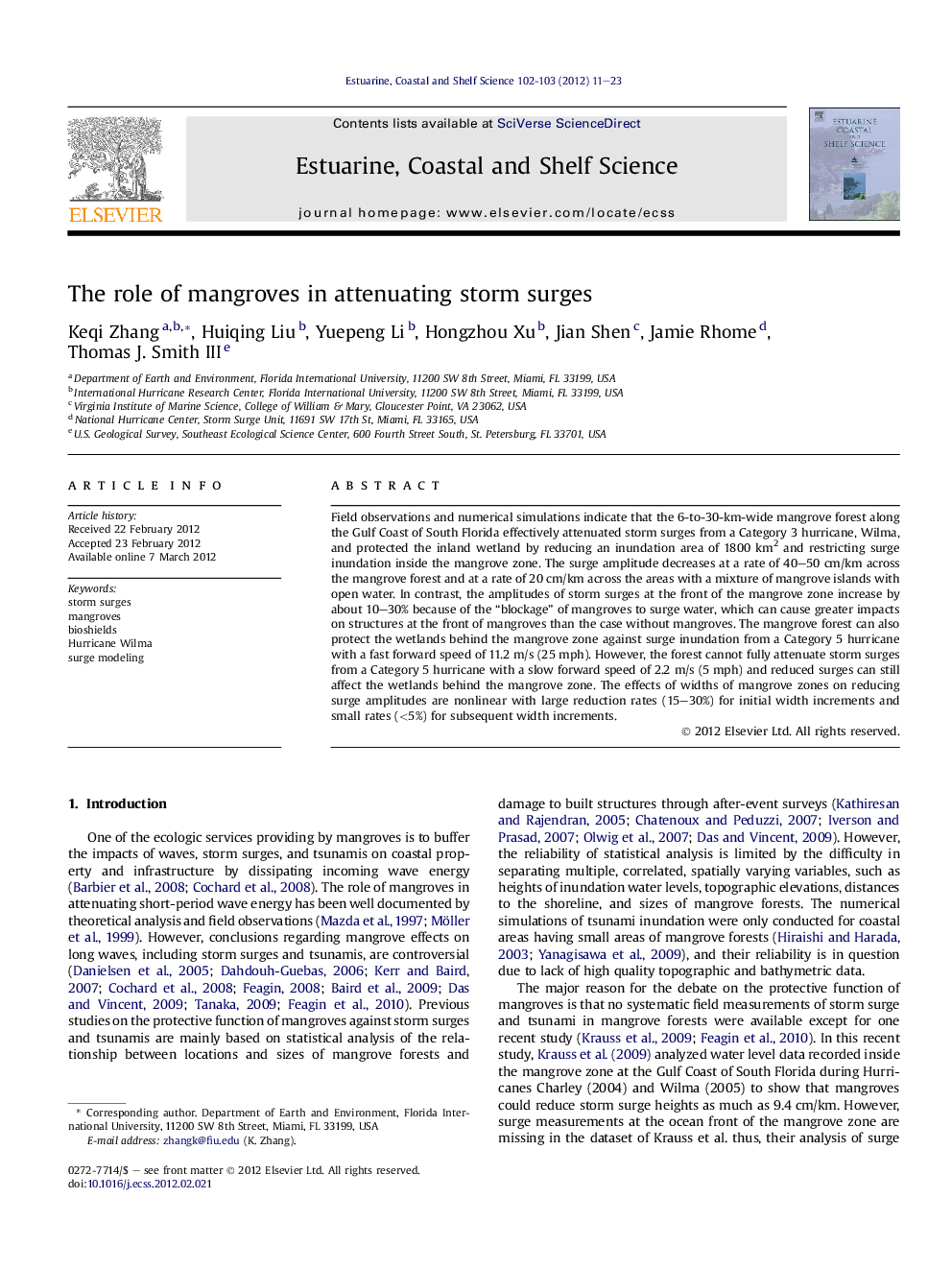| Article ID | Journal | Published Year | Pages | File Type |
|---|---|---|---|---|
| 4540278 | Estuarine, Coastal and Shelf Science | 2012 | 13 Pages |
Field observations and numerical simulations indicate that the 6-to-30-km-wide mangrove forest along the Gulf Coast of South Florida effectively attenuated storm surges from a Category 3 hurricane, Wilma, and protected the inland wetland by reducing an inundation area of 1800 km2 and restricting surge inundation inside the mangrove zone. The surge amplitude decreases at a rate of 40–50 cm/km across the mangrove forest and at a rate of 20 cm/km across the areas with a mixture of mangrove islands with open water. In contrast, the amplitudes of storm surges at the front of the mangrove zone increase by about 10–30% because of the “blockage” of mangroves to surge water, which can cause greater impacts on structures at the front of mangroves than the case without mangroves. The mangrove forest can also protect the wetlands behind the mangrove zone against surge inundation from a Category 5 hurricane with a fast forward speed of 11.2 m/s (25 mph). However, the forest cannot fully attenuate storm surges from a Category 5 hurricane with a slow forward speed of 2.2 m/s (5 mph) and reduced surges can still affect the wetlands behind the mangrove zone. The effects of widths of mangrove zones on reducing surge amplitudes are nonlinear with large reduction rates (15–30%) for initial width increments and small rates (<5%) for subsequent width increments.
